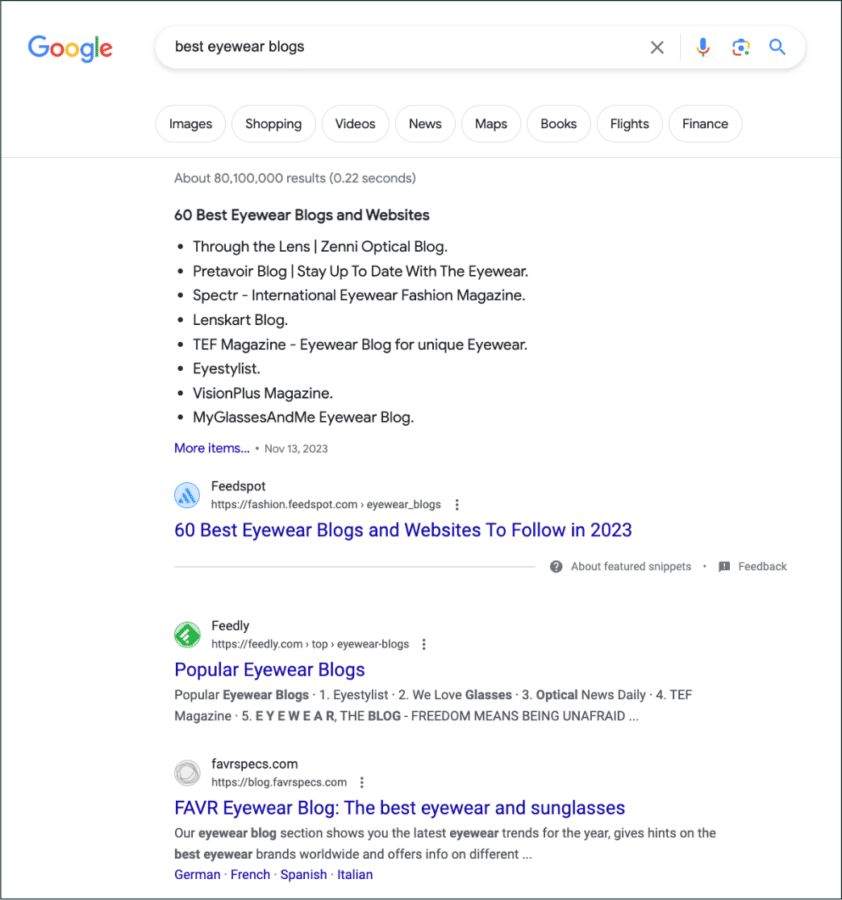- 1. Why Analyze SEO TAM?
- 2. Definitions
- 3. How to Find Your SEO TAM
Table of Contents
SEO is the best long-term investment most businesses can make in acquiring customers, with very few exceptions.
However, there are exceptions. SEO is a terrible investment for some industries.
Finding your Total Addressable Market for Search (SEO TAM) is one way to determine if SEO is a good investment for you. Put another way, how much revenue is generated in your industry from search engines?
1. Why Analyze Total Addressable Market for Search?
Imagine me asking you to spend thousands of dollars on a billboard without telling you where that billboard will be.
Your first thought is going to be, “Why isn’t this guy telling me where the billboard is? What is he hiding?”
I know, I’m a trustworthy guy. But I’d hope you’d think twice before paying for my billboard placement.
Search should work the same way.
Here’s our framework for calculating your SEO TAM so you can decide if it’s the right investment for you.
2. A Few Definitions Related to SEO Total Addressable Market
We’ll keep it brief. Three definitions to go through:
- Total Addressable Market (TAM) — how much revenue could your product/service generate if you captured 100% of customers? (Including, but not limited to search engines.)
- Total Search Market (TSM) — a count of the total website visitors that come from search to websites in your industry.
- Total Addressable Market for Search (SEO TAM) — how much revenue could your product/service generate if you captured 100% of people using search engines to find a product/service?
3. How to Find Your Total Addressable Market for Search
We’ll first scout out the market to determine whether SEO is worth it.
How much organic traffic does your industry have?
Who are your top competitors?
How much of the available market share is up for grabs?
To answer these questions, I’ll walk you through how our team assesses total market opportunity for potential clients.
First things first, open each of these up in their own window:
- Ahrefs (or a similar keyword research tool)
- A blank Google Sheet
Now, let’s walk through the entire process using “eyewear” as an example.
Identify Your Industry/Niche
Your site’s SEO revenue potential will depend on a few key metrics.
You’ll need to figure out the following:
- The estimated organic traffic in the industry
- How much of this traffic has commercial intent
- What percentage of the market share you can reasonably capture
From there, we can calculate your potential revenue from SEO.
But we first need to know a bit more about the competition. Here’s how you can identify your search engine competitors:
Come up with three phrases that describe either what your business does or the core product you offer. Each should be 2–3 words long (ideally).
Plug one of them into this format and Google it:
Best [insert theme] blogs
We’ll use “best eyewear blogs” as our example.
Locate the Competition
Googling “best [insert theme] blogs” will bring up two types of results — actual blogs and blog round-ups.
We’re most interested in the latter.
These are the pages from sites like Feedspot, Feedly, and Detailed that highlight the most popular blogs in the space. They’re typically titled something like “The 15 Best Eyewear Blogs of 2024.”
Open up the top five round-ups that pop up, and then open each of the blogs spotlighted in these posts in a new tab. These will be your best source to find popular informational sites in your industry.
Set Up Your Spreadsheet
By the end of this process, you’ll have a spreadsheet that maps out your entire industry and calculates your SEO potential.
Here’s an example of how we set up our Google Sheets spreadsheet:
Feel free to use these column headers or tweak them to your liking. We’ll start filling in the details shortly.
Narrow Down the Results
Depending on your industry, you may have dozens (if not hundreds) of blogs to analyze. We want to narrow this list to the most reputable, established, and active brands.
As you go through, you’ll close out any tabs with sites that:
- are inactive
- have minimal organic traffic (<1,000 visits per month)
We also want to see how much organic traffic each blog gets. To do that, we’ll split the remaining sites into two segments:
Sites Focused on This Theme
For sites predominantly focused on this specific theme (in our case, eyewear blogs), you’ll plug each into Ahrefs to get their organic traffic.
Add the site theme, referring domains, URL, and estimated organic traffic to your sheet for each.
Sites Including This Theme
Some websites don’t have any one theme. Take Forbes, for example, which covers everything from sports to finances — and, yes, eyewear.
Things can get tricky for sites with a broader focus. We only need to know how much organic traffic they see for the given theme (not in general).
One way around this is looking for a subfolder or subdomain on the site with articles about the theme.
Plugging http://www.forbes.com into Ahrefs gives us an organic traffic of 74.2 million. But not all of those visits are for their eyewear content, and an even smaller number of people are interested in buying a pair of sunglasses today.
We’d get a much more accurate traffic estimate if we used https://www.forbes.com/vetted/fashion/eyewear/ instead.
Of course, not all sites are as neatly organized as Forbes.
So here’s a general rule of thumb:
If the site is broad and not an industry leader, skip it. If it is a leader, plug it into Ahrefs to get a feel for their page-specific organic traffic. But only estimate the total traffic for the target market and ignore everything else.
Add the theme, URL, and estimated organic traffic (for the theme ONLY) to your spreadsheet.
Do Some Quick Math
We need to make sense of these numbers and determine what they mean for your business.
So, let’s do a little math!
The Total Search Market (TSM) Calculation
The first thing we’ll do is add up the search volumes. This will give us a rough breakdown of the Total Search Market (or TSM) for the industry minus the smaller players.
An estimate is totally fine. Worst-case scenario, you underestimate the TSM, and the market is way larger (also the best-case scenario).
For the six eyewear blogs we identified, we have a search volume of 1,797,800 per month.
The SEO TAM Calculation
Yes, nearly two million users is huge. But not all of them want to buy a pair of sunglasses or contact lenses right away. And some are just looking for information.
Remember: Your potential revenue from SEO all depends on converting sales. So, we want to narrow that number down to just commercial intent traffic.
For sites that sell competing products, add up the estimated search traffic that their product and category pages see on a monthly basis. These pages likely see the majority of their organic traffic come from users who are ready to make a purchase.
I’d also recommend including their homepage since many users will search for the brand on Google instead of a specific product page.
Now, how many searches per month do they get for these sales-focused keywords? This will give you the Total Addressable Market for Search (or SEO TAM).
Our calculations of the top sites yielded an SEO TAM of 1,320,000 potential SEO purchases per month.
Determine the Earning Potential
Now that we know the TSM and SEO TAM, we can better understand our SEO earning potential.
One key data point is the average purchase price for your products.
Let’s assume an average pair of glasses costs $100.
If we capture 1% of the total search market and convert on 2% of visits, we get an estimated monthly revenue opportunity of $26,400.
But we also have to factor in the potential for repeat customers.
How likely is it that a customer will return to buy another pair? What data do we have on past customers’ likelihood of repurchasing?
Do most customers return for additional purchases/repeat purchases every 12 months? Or is it rare that a customer comes back to buy again?
The answers to these questions are largely industry-specific.
For example, most people buy new eyeglasses every 1–3 years, so we’d get a mix of new and returning customers yearly. If we sold contact lenses, we might see return customers several times a year.
Calculating SEO TAM is the two-hour exercise that every business should engage in before putting large portions of their marketing budget into SEO.
Depending on the earning potential, you can decide whether SEO is worth the investment or pursue other channels.
Need help deciding if SEO is right for you? Contact us to schedule a consultation and see if SEO is a smart investment for your business.
SCALE YOUR ORGANIC TRAFFIC
Subscribe to our monthly newsletter









